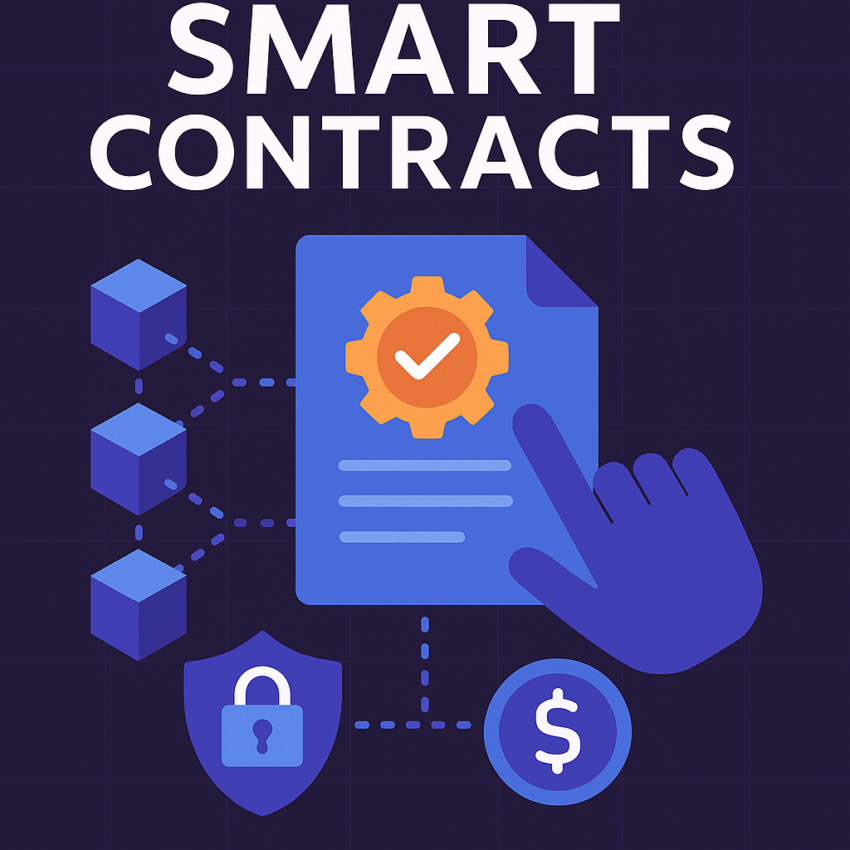Introduction
As blockchain technology continues to evolve, one of its most creative applications has been smart contracts. These self-executing digital contracts are revolutionizing how people do business by removing intermediaries and automating complex processes in a transparent, secure, and efficient manner. In this article, we will discuss what smart contracts are, how they work, their practical applications, and their potential future.
What Are Smart Contracts?
A smart contract is a program stored on a blockchain that automatically executes predetermined actions if specific conditions are met. The concept was first put forth by computer scientist Nick Szabo in the 1990s but became a viable concept only with the development of platforms like Ethereum.
The key characteristics of smart contracts are:
Autonomy: They execute without human intervention.
Trustless: One need not trust the other party; the code enforces the rules.
Immutable: The contract cannot be changed once it is deployed.
Transparent: All actions are transparent and can be confirmed on the blockchain.
How Do Smart Contracts Work?
Coding the Agreement: Developers code the contract using programming languages like Solidity (for Ethereum).
Deployment: The contract is deployed onto the blockchain.
Execution: When predefined conditions are triggered (e.g., payment received), the contract performs the corresponding action (e.g., ownership transfer).
Verification: All actions are documented on the blockchain for verification and audit.
Example: A smart contract can be used to pay a freelancer automatically once a project milestone is confirmed complete.
Use Cases of Smart Contracts
Decentralized Finance (DeFi):
Enabling loans, yield farming, and insurance without banks.
Automating trades and interest.
Real Estate:
Automating property transfers and escrows.
Reducing fraud and paperwork.
Supply Chain Management:
Tracking products from origin to delivery.
Ensuring authenticity and reducing counterfeits.
Voting Systems:
Enabling secure, transparent, and tamper-proof elections.
Digital Identity and Credentials:
Issuing certifiable certificates (e.g., diplomas, licenses) on the blockchain.
Advantages of Smart Contracts
Speed: Executed immediately without delay.
Cost Efficiency: Eliminates intermediaries and saves fees.
Accuracy: Reduces human errors.
Security: Cryptographically secured and tamper-proof.
Global Access: Can be used by anyone with internet access.
Challenges and Limitations
Coding Errors: Smart contract vulnerabilities lead to loss of funds (e.g., The DAO hack in 2016).
Scalability: Intensive usage leads to network congestion and excessive fees.
Legal Status: Unclear laws in most regions.
Irreversibility: Difficult to undo mistakes once launched.
The Future of Smart Contracts
With advancements in:
AI integration, smart contracts will be more dynamic.
Interoperability, contracts will work on multiple blockchains.
Standardization, making development more secure and open.
Platforms like Ethereum, Cardano, Solana, and Polkadot are aggressively improving smart contract capability, nudging them toward mainstream use.
Conclusion
Smart contracts aren’t just lines of code but a shift in how we establish trust, enforce agreements, and conduct business in the digital economy. As the technology matures, it can democratize access to financial tools, bring more transparency, and automate industries by the dozen
